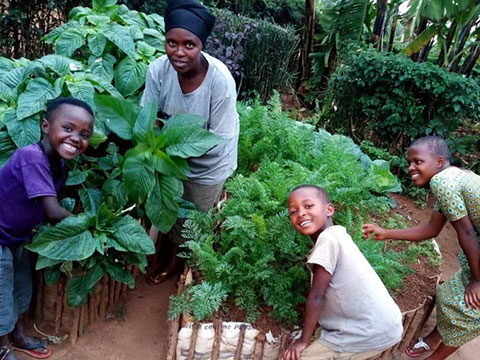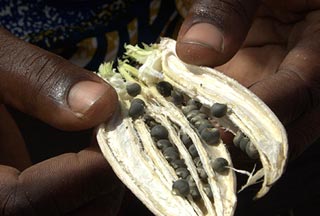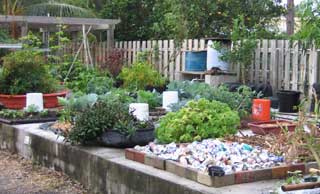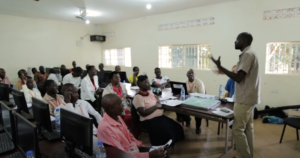 Permaculture offers a path to sustainable living and food production that emphasizes natural processes and cycles. It’s not just a gardening technique; it’s a philosophy and ethical framework for developing ecosystems that mimic the resilience and diversity of natural habitats. By integrating permaculture principles into our lives, we can create more sustainable, efficient, and productive systems that benefit both people and the planet.
Permaculture offers a path to sustainable living and food production that emphasizes natural processes and cycles. It’s not just a gardening technique; it’s a philosophy and ethical framework for developing ecosystems that mimic the resilience and diversity of natural habitats. By integrating permaculture principles into our lives, we can create more sustainable, efficient, and productive systems that benefit both people and the planet.
What is Permaculture?
Permaculture stands for “permanent agriculture” and “permanent culture,” reflecting its broad application beyond just agriculture to sustainable human habitats and community living. It’s based on observing natural systems to design human environments that have the diversity, stability, and resilience of natural ecosystems.
At its core, permaculture is guided by three ethics: care for the earth, care for people, and fair share. These principles inspire a philosophy of working with, rather than against, nature; viewing everything as interconnected; and recognizing the value of each element in a system.
Examples of Permaculture
- Food Forests: A food forest is a managed garden area that mimics a woodland ecosystem but uses fruit and nut trees, shrubs, herbs, vines, and perennial vegetables. The layers are designed to function together, providing food, habitat, and ecosystem benefits.
- Rainwater Harvesting Systems: These systems collect rainwater from roofs or other surfaces to store for later use, often in gardens or for other agricultural purposes. This reduces the need for external water sources and can be crucial in water-scarce environments.
- Companion Planting: This practice involves growing different plants together to benefit each other, such as providing nutrient support, pest control, or pollinator attraction. For example, planting basil near tomatoes can help repel pests and enhance the flavor of the tomatoes.
- Swales and Contour Planting: Swales are shallow trenches that follow the contour lines of a landscape, designed to capture and hold rainwater and reduce erosion. This technique ensures water seeps into the soil, recharging groundwater and hydrating nearby plants.
- Natural Building Techniques: Using local, natural, or recycled materials to build structures that are energy-efficient and sustainable. Examples include straw bale houses, earth-sheltered homes, and buildings made with rammed earth.
- Sheet Mulching: Also known as lasagna gardening, this method involves layering organic materials on the ground to decompose and form rich soil. It suppresses weeds, retains moisture, and improves soil health without digging or tilling.
- Vermicomposting: The process of using worms to compost kitchen scraps and other organic waste into a nutrient-rich soil amendment. This method is efficient and can be easily implemented in small spaces.
The Benefits of Adopting Permaculture
Permaculture designs make efficient use of water through techniques like rainwater harvesting, swales, and drip irrigation. These methods minimize waste and reduce the reliance on large-scale irrigation systems, which can be harmful to the environment.
One of the foundational principles of permaculture is to enhance soil fertility naturally. By using composting, no-dig gardens, and green manures, permaculture systems rebuild and maintain healthy soil, which is the bedrock of any agricultural endeavor.
Permaculture systems also help combat climate change by reducing greenhouse gas emissions and increasing carbon sinks. Ultimately, the diversity and redundancy built into permaculture designs make these systems more resilient to climate extremes, ensuring food security in an uncertain future.
Getting Involved with Permaculture
There are numerous resources and communities for those interested in permaculture. Echo’s Global Farm, located in Fort Myers, Florida, regularly hosts classes with live examples and experts to help others learn how to implement permaculture practices. You can learn more at https://echonet.org/events/.
By embracing permaculture, we can create resilient, productive systems that benefit all living beings and the planet. We hope you join us in this journey to help increase food security worldwide.
–
ECHO provides hope against hunger around the globe through agricultural training and resources. As a Christian technical networking and resourcing organization, ECHO builds a diverse, global network and serves that network by sharing validated contextualized agricultural options with technical excellence. ECHO’s goal is to serve its network members to advance food security and sustainable livelihoods. ECHO’s North American Regional Impact Center is located in Fort Myers, Florida with a global presence through four Regional Impact Centers in the USA, Thailand, Tanzania, and Burkina Faso. For more information about ECHO call 239-543-3246 or visit echonet.org or ECHOcommunity.org.












